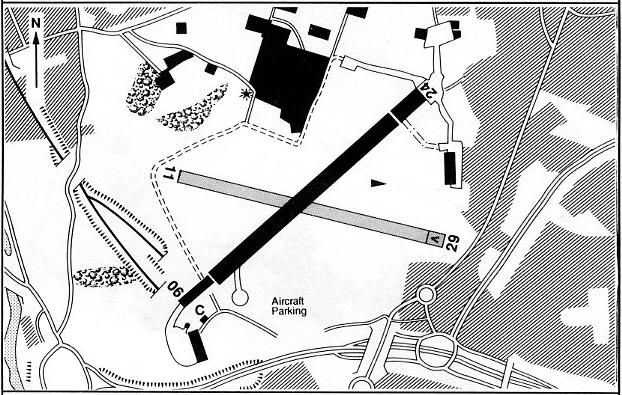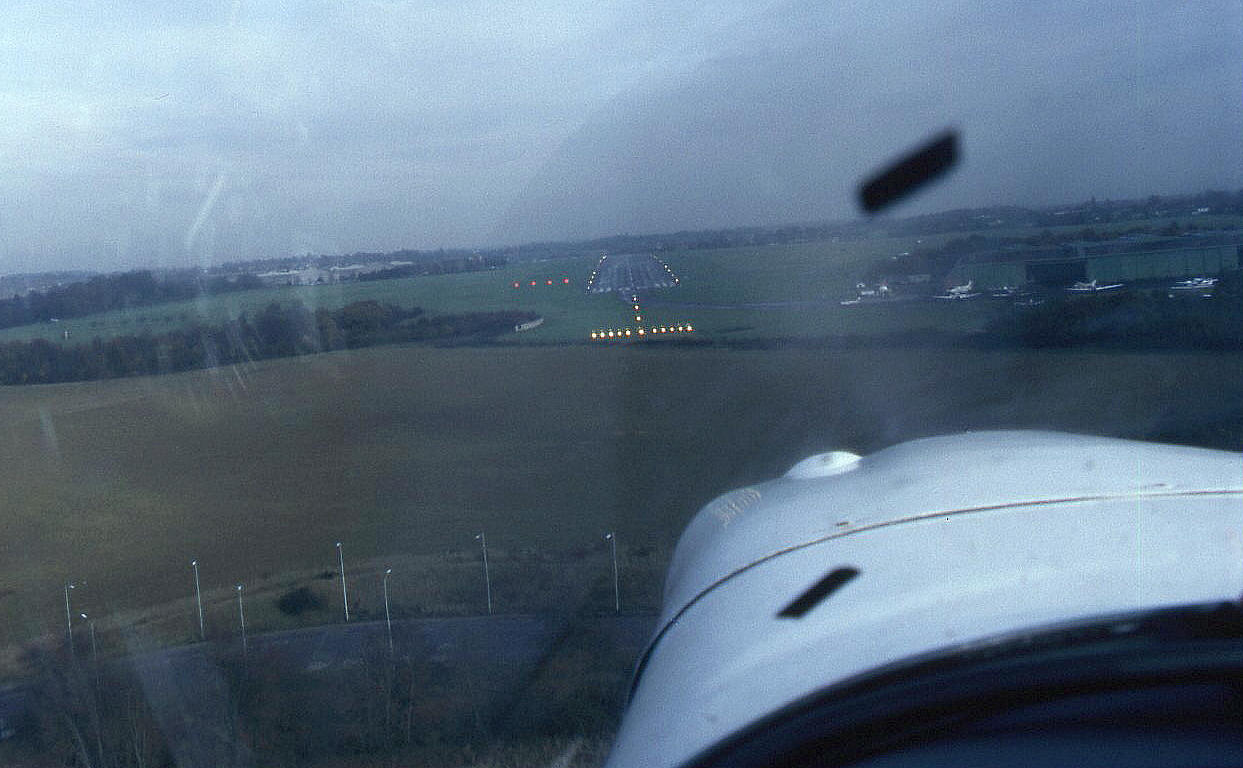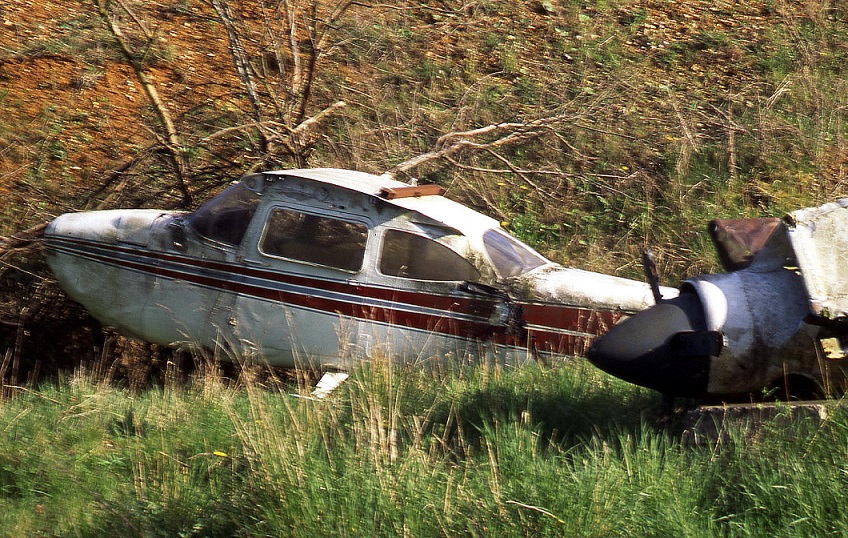Leavesden
LEAVESDEN: Civil aerodrome
Note: All pictures by the author unless specifield.
Operated by: 1947 to 1961 De Havilland
1965: Bristol Siddeley Engines Ltd
1980s/1990s: Rolls-Royce Ltd (plc)
Manufacturing: WW2: De Havilland, London Aircraft Production Group and later Rolls Royce Aero Engine factory. Jetstream Aircraft
British airlines: Post 1945: Humber Airways
Charter/air taxi: Post 1945: Aircruise
Flying schools: Post 1945: Delta Flight, Leavesden Flight Centre (And many more)
Location: N to NE of A41, 2nm NE of Watford
Period of operation: WW2 (1942?) to 1990 (?)
Note: These maps are reproduced with the kind permission of Pooleys Flight Equipment Ltd. Copyright Robert Pooley 2014.
Runways:
1965: 06/24 924x46 hard 10/28 881x27 grass 01/19 670x27 grass
1990: 06/24 957x46 hard 11/29 870x31 grass
Note: In a 1997 edition of Pooley’s Flight Guide the grass runway 11/29 was still listed as useable but in fact it had become disused. Indeed, when I started to learn to fly at LEAVESDEN in 1988, the grass runway was not an option we used and was not mentioned. This is not to say it wasn't actually available if requested.
NOTES: According to Ron Smith in his excellent book British Built Aircraft Vol.3, “The Watford Division of the de Havilland Aircraft Co. Ltd was set up to provide additional manufacturing capacity for the Mosquito and Sea Mosquito.” But he doesn’t provide a date. Possibly 1942 is a good enough guess? It appears1,390 Mosquitos were assembled and flight tested here. I am not at all sure they were actually manufactured here and indeed, photographs displayed in the main factory, which is now film studios operated by Warner Brothers, seems to support this?
The London Aircraft Production Group also built 710 Handley Page Halifax bombers here. It is claimed that LAPG built Halifax’s were built faster than the Handley Page factory at RADLETT. The last Halifax to leave LEAVESDEN was PN460, named London Pride in a ceremony on the 16th April 1945. In the mid to late 1950s at least, de Havilland overhauled Doves and Herons here, these types arriving from “all over the world”.
JETSTREAMS
In the 1970s, for a brief period, Jetstream Aircraft moved here to handle the remnants of Handley Page Jetstream production, then Scottish Aviation at PRESTWICK took the project over.
A NOTABLE VISITOR
In March 2022 I was kindly contacted by Mr Peter Warburton who had had work experience here with Leavesden Flight School in the early 1990s. He passed on many happy memories, not least having his first flight whilst working here. This was in, (how lucky can you get?), in the Grumman G-21 (JRS-5) Goose N4575C, which, if not having been restored, was certainly repainted here. In recent years it has been based at Weston near Dublin.
PERSONAL MEMORIES OF DELTA FLIGHT
This airfield has many strong memories for me as I started learning to fly here and loved every minute of it. In those days Delta Flight were offering a fixed price PPL course subject to an assessment. Also, they were the only flight school I could find that were prepared to offer basic aerobatic tuition right from the start. To me this was important, as, although never intending to become proficient in aerobatics, learning how to handle an aeroplane in 'unusual attitudes' seemed a sensible way to proceed. My instructor for the assessment flight was Clive Davidson, in the T-67 G-BONU, and during that forty minute flight he taught me to aileron roll the aircraft.
Sadly, shortly after starting the course the owner and CFI of the flying school was killed with a PPL on the 20th November 1988 when their Slingsby T.67 (G-BLRE) failed to recover from a spin. I was just about to start a lesson when the news arrived that the aircraft was overdue so we set off to see if we could locate it as it was assumed the engine might have failed and they’d be stranded in a field. In the event it was I who spotted the almost totally burnt- out remains in a field near Waddesden and it took a while before I felt confident enough to resume training at WYCOMBE AIR PARK.
Seeing the accident site was doubly poignant as a week before we’d had a control jam in a spin in that same aircraft but the instructor had managed to overcome it somehow, believing I had “frozen” at the controls. Despite my insisting this was most certainly not the case, he persisted in his opinion and consequently the matter was never fully investigated at the time and the subsequent AAIB investigation following the fatal crash also believed the instructors version of events. But, I suppose, who could reasonably be expected to believe a student pilot with about four hours logged? As they say, “I learnt a thing or two about flying” from this.
The legacy haunts me to this day. IF the accident investigators had taken me seriously many people would almost certainly be alive today. A rudder jam was almost certainly the cause of so many fatal crashes in T-67s, and the reason wasn’t discovered until 2009. Even then it seems uncertain if it was fully realised?
DELTA FLIGHT PICTURES
TRYING AGAIN
Despite being very upset by the accident and closure of Delta Flight, I thought it best to try flying again. I cannot remember the name of the school but I was introduced to the Piper PA.38 112 Tomahawk. I did two instructional flights, on the 10th and 12th and did not enjoy them at all. The operation was a shambles and very unprofessional, and, I did not like flying the Tomahawk one bit. Eventually, in February 1989, I elected to start training again with Wycombe Air Centre after taking advice from some highly experienced pilots. That operation was so good, I still wonder how other lesser operations can exist. But, they definitely were not the cheapest option. As they say - you get what you pay for. The picture is of the Tomahark G-BNPM, also operated by the school, but I flew two instruction flights in G-BGRX.
ANOTHER LEAVESDEN MEMORY
After ordering a draw-bar trailer from Adcliffe Engineering in Leicestershire I discovered that the owner of the company, Paul Savage, was also a very keen pilot and owned a Cessna C.340 (5B-CHN) based at East Midlands airport. As a thank you for placing this order Paul flew down to Leavesden with his wife to take me, my wife and our two children, for a day trip to Guernsey.
They had suggested Paris, but as my wife and I were reasonably familiar with that city, I asked if we could fly to somewhere else we were not familiar with. On the way back we had to land to clear Customs and Immigration so we landed at Southampton.
On landing we received a message from Leavesden saying that if we didn't arrive before 19.00 severe charges would be imposed. The problem was that Paul mainly flew IFR and so, shortly after taking off from Southampton he handed control over to me to fly low level VFR back to Leavesden. A task I was delighted to accomplish. He did the landing of course and we landed at 18.45, disembarked hastily, and Paul took off just a minute or two before the 19.00hrs 'curfew'.
ANOTHER PERIOD FOR LEAVESDEN
After the aerodrome closed LEAVESDEN became major film studios where for example the Harry Potter films were made and in this connection I have made many frequent visits back to the site with my truck transporting motion control equipment. In the early days it was very sad to see the neglected ‘pre-fab’ building where Delta Flight was once based, next to the ‘Flight Sheds’ on the south side. In 2010 work began to transform the site into a Harry Potter theme park and ultra-modern film studios. About half of the 06/24 runway was dug up but the western half still exists, mainly used for parking and storage.
JAMES BOND FILM RELICTS
The first picture is of the remains of a Cessna 172, dumped on a back-lot, in April 2006. This aircraft featured in at least one James Bond film. The second picture is of the Pilatus Porter fuselage used in one Bond film.
See my article about Museums, Gate Guardians etc for three more pictures, including these two before they were dumped, of aircraft used in films at LEAVESDEN.
LEAVESDEN AS AN 'AIRPORT'
It came as quite a surprise during my research to learn that LEAVESDEN was once an airport, in 1971 at least, when Humber Airways started scheduled flights using the Brittan-Norman Islander flying from BROUGH and LECONFIELD in YORKSHIRE. The opening of this ‘novel’ service attracted quite a bit of press attention. HEATHROW was far too expensive to operate into, and putting passengers via a mini-bus onto rail connections into central London seemed a sensible option. The each way fare was £7 7s. As a confirmed supporter of regional airports serving the needs of travellers, rather than seeing the expansion of ever bigger international ‘hubs’ it does appear that Humber Airways were way ahead of the ‘game’. Probably too far ahead as it turned out.
We'd love to hear from you, so please scroll down to leave a comment!
Leave a comment ...
Copyright (c) UK Airfield Guide



























